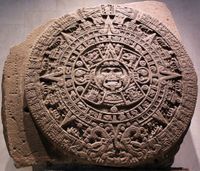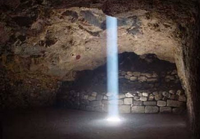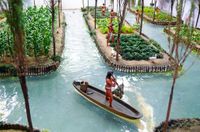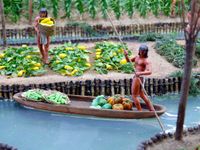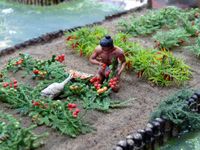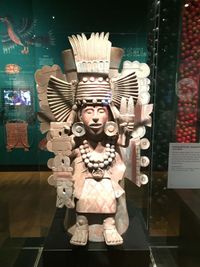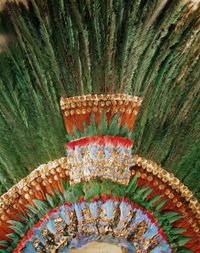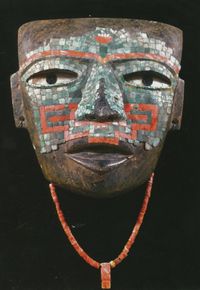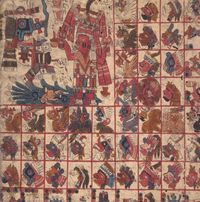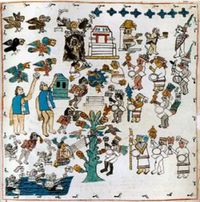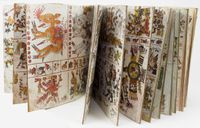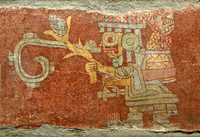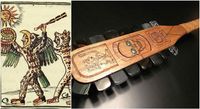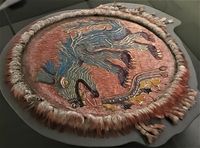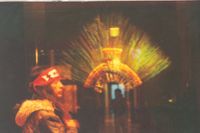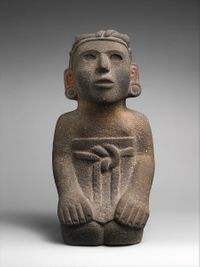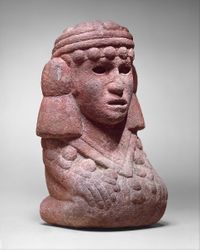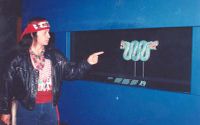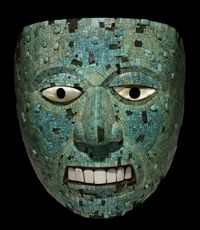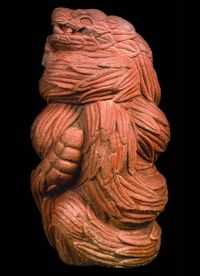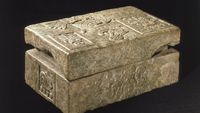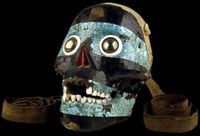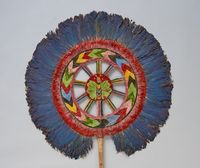Who were the Aztecs?
The Aztecs were a fascinating, ancient high culture! Here is just a little bit of information about them...
The Aztecs were brilliant engineers and very clever diplomats! The Aztec Empire was based on the Mexihka people, who belonged to the Nahuatl people. The dominant language was (and still is!) Nahuatl (like the German language for the German people and the Japanese language for the Japanese people). So: the Nahuatl people speak the Nahuatl language. Countless other local languages were also spoken.
We were called: Aztecs - Nahuatl - Mexihka and Tenochka. We call ourselves: sons of the sun - corn people - indigenous people, indigenous people and real people...
The Aztecs were a very sophisticated culture, one of the largest in the world! They knew the system of zero, were philosophers, had observatories and were astronomers. They knew a lot about space! There were astrologers, surgical medicine, dentists, zoological and botanical gardens, and aqueducts. Architects made millimetric calculations - hydraulic architecture or architecture on the water!
Aztec calendar stone
Observatory in Xochikalko
Xochimilko, "the floating gardens"
Xochimilko, "the floating gardens"
Xochimilko, "the floating gardens"
Xochimilko, "the floating gardens"
Government duties were taken over by the council of elders, call: Ueyi Tlahtokan!
There were libraries with hundreds of thousands of bark paper books! Crafts made of: ceramics, beads, bones, FEATHERS, lava stone, leather, painting, wall painting, gold, silver, bronze, toys, jewelry, tools, etc.
Ceramic handicrafts
Holy Crown of Moctezuma
Turquoise mask, Teotihuakan
Codex Aubin Tonallamtl (1576), Bibliothéque nationale de France, Paris, France
Codex Matritense (1558-1585), Palacio Real, Madrid, Spain
Codex Borgia (15th century), Apostolic Library of the Vatican, Rome, Italy
There was NO illiteracy, as there were in Spain in the XVI century well over 95%!
They bathed EVERY DAY while soap was UNKNOWN in Europe.
With an estimated population of over 200,000 people, Mexihko Tenochtitlan, the capital of the Aztecs, was one of the largest cities in the world around 1500! The population of the entire empire was estimated at around 20 million people.
The state religion of the empire was a nature religion that included dozens of symbols. The most important of them were represented in the central temple district of the capital Mexihko Tenochtitlan. The most important symbols were: Huitzilopochtli - the symbol for the will, Ketzalkoatl - the symbol for wisdom, Tezkatlipoka - symbol for memory, Totahzin Tonatiuh - our dear father Sun and Tonanzin Koatlikue - our dear mother earth who wears a snake skirt.
Other symbols are: Xipe Totek - Zenteotl - Mixkoatl - Miktlantekuhtli - Miktlanzihuatl - Tlalok - Ehekatl - Tozi - Chalchiuhtlikue - Chikomekoatl - Ziuateteo - Koyolyauhki --Nanahuatzin - Tekuzistekatl - Xakocholikotalli - Xakateochikotalli and others.
The most important foods and drinks were: corn, different types of beans, pumpkins, many types of chilli, cactus leaves, mushrooms, amaranth, honey, avocado, tomatoes, cactus fruits, cocoa, vanilla, potatoes, agave honey, agave liqueur, many roots, many Types of fruits, many types of insects, iguanas, snakes, armadillos, ducks, trout, many species of birds, many types of fish, turkeys, sea shrimp, foxes, deers, and many more.
Amaranth
Cactus fruits
Cactus leaves
The oversupply of food made it possible for a large part of the Aztec population to pursue occupations other than food production. The women wove textiles from agave fibers and cotton. Men also engaged in craft specializations such as making ceramics, obsidian - flint tools, and luxury goods such as pearl and feather work, making tools and musical instruments.
Aztec Codex
Wall painting, Teotihuakan, 350-550 AD.
Replica of a battle sword with obsidian
There were no thieves, prisons, old people's homes, cemeteries, there were no words for: sin, evil, devil, god, priest, temple, pyramid, old people, death, burial, friend, enemy, church, temple, Pope, alms, homeless, keys, angels, paradise, serafin, holy spirit, mass, swear words and more.
There were NO “human sacrifices” - “bloody ceremonies” - “cannibals” and “gods”, as all Europeans think. Believe or not.
Likewise, there was NO so-called: “Conquest”, “Discovery”, “Colonization” or “Christianization”, but there was certainly: Holocaust! Massacre! Invasion! Total destruction!
The way Europeans and Mexicans look at it ... is like that of Black people from Africa and slave drivers ... VERY DIFFERENT!!!
And especially OUR SACRED ART, OUR PROPERTY, MOST OF ITS GOLD, WAS STOLEN FROM US WITH GREAT FORCE!!!
Our shrines can actually be found everywhere: In VERY many "private collections" worldwide and in addition in: Austria, England, the USA, Germany, Spain, the Vatican, Italy, France and others.
Illnesses such as typhus and smallpox brought in by the Spaniards also affected the indigenous population - in August 1521, Fernando Cortés Pizarro finally managed to storm the weakened capital and seal the end of the Aztecs.
With the almost complete disappearance of its own sources, the history of the Aztecs remains as myth-laden as hardly any other.
The testimonies of legendary high cultures such as that of the Aztecs are both fascinating and puzzling. The desire to devote oneself to professions other than food production. The women wove textiles from agave fibers and cotton. Men also engaged in craft specializations such as making ceramics, obsidian flint tools, and luxury goods such as pearl and featherwork, and making tools and musical instruments.
Feather shield of the father of Moctezuma, Weltmuseum Vienna, Austria
Moctezuma's feather crown, Weltmuseum Wien, Austria
Kneeling female figures, 15th-16th centuries Cent., Metropolitan Museum of Art, New York, USA
Turquoise mosaic double snake, British Museum of Mankind London, England
Turquoise mask, British Museum of Mankind London, England
Sculpture of Quetzalkoatl, Vatican, Rome
Aztec feather shields, Lindenmuseum Stuttgart, Germany. I was allowed to hold it in my hands!
Aztec stone carving (1470), Völkerkundemuseum Hamburg, Germany
Turquoise and Obsidian Mask, British Museum of Mankind London, England
Aztec feather fan, Weltmuseum Wien, Austria
